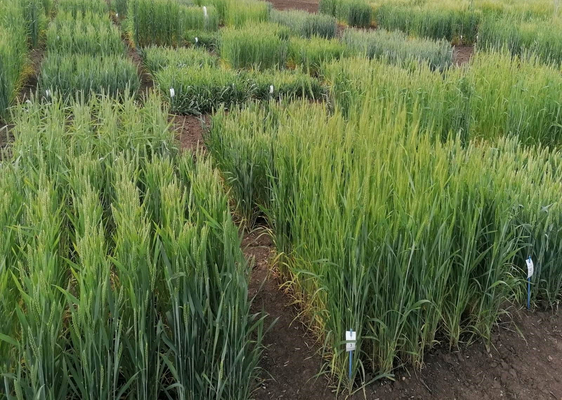
Study Reveals Extreme Dwarfism in Wheat Impairs Gluten Composition and Baking Quality
September 24, 2025| |
A recent study by the Leibniz Institute for Food Systems Biology at the Technical University of Munich (LSB) and the Leibniz Institute of Plant Genetics and Crop Plant Research (IPK) has found that extremely dwarf wheat, a variety developed during the Green Revolution to increase yields and prevent wind damage, has a less favorable gluten composition. As a result, it produces flour with poorer baking properties than semi-dwarf, dwarf, or tall wild-type wheat.
The introduction of so-called dwarfing genes (Reduced height-Rht genes) during the "Green Revolution" in the 1960s is considered a milestone in agriculture. These genes ensure that wheat plants are shorter and therefore less susceptible to wind damage (lodging). They can also invest more energy in grain filling, which can significantly increase yields. Over 70% of all wheat grown globally today contains at least one of the dwarfing genes responsible for its short stature.
Research on dwarfism genes in wheat shows that while common genes have little effect on gluten, those causing extreme dwarfism can negatively alter the gliadin-glutenin ratio, making the dough too soft, leading to poorer baking quality. However, the study found that environmental factors, particularly warm and humid conditions during grain filling, had an even greater negative impact on gluten composition.
For more details, read the article on the LSB website.
| |
You might also like:
- UC Davis Develops Wheat with Reduced Gluten Proteins
- Gene Editing to Produce Gluten-Free Wheat
- Gene Editing Can be Used to Make Wheat with Safe Gluten
Biotech Updates is a weekly newsletter of ISAAA, a not-for-profit organization. It is distributed for free to over 22,000 subscribers worldwide to inform them about the key developments in biosciences, especially in biotechnology. Your support will help us in our mission to feed the world with knowledge. You can help by donating as little as $10.
-
See more articles:
-
Plant
- UC San Diego and Yale Scientists Develop Safer Alternative to CRISPR
- CSHL Scientists Discover Master Switch for Plant Growth
- Researchers Pinpoint Soybean Gene Involved in Seed Size and Quality
- EU Authorizes Use of GM Maize DP51291 for Food and Feed
- CRISPR Produces Disease-resistant Cacao Plants
- Study Reveals Extreme Dwarfism in Wheat Impairs Gluten Composition and Baking Quality
- Survey Examines Farmers’ Adoption of Bt Brinjal in Bangladesh
-
Environment
- Gene-Edited Poinsettias Branch Naturally, Do Not Need Bacterial Infection and Pruning
-
Read the latest: - Biotech Updates (December 17, 2025)
- Gene Editing Supplement (December 17, 2025)
- Gene Drive Supplement (February 22, 2023)
-
Subscribe to BU: - Share
- Tweet

